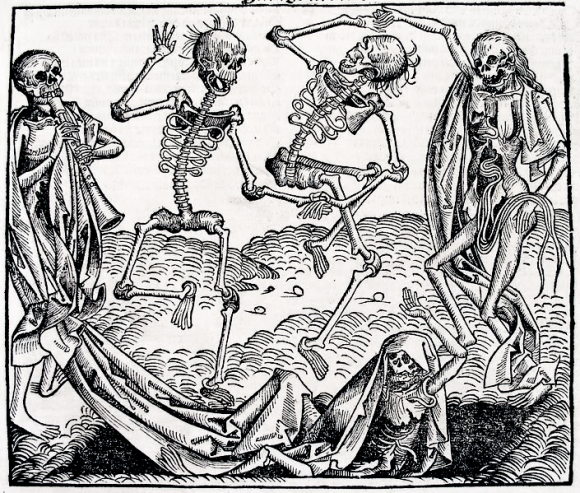An international team of researchers has discovered that the Justinian Plague and the Black Death – responsible for killing killed somewhere between 50 and 100 million people – were caused by distinct strains of the same pathogen, one that faded out on its own, the other leading to worldwide spread and re-emergence in the late 1800s. These findings suggest a new strain of plague could emerge again in humans in the future.

Little has been known about the origins or cause of the Justinian Plague and its relationship to the Black Death, some 800 years later. The Plague of Justinian, which helped bring an end to the Roman Empire, struck in the sixth century. It is estimated to have killed between 30 and 50 million people – virtually half the world’s population – as it spread across Asia, North Africa, Arabia and Europe. The Black Death would strike with similar force, killing 50 million Europeans between just 1347 and 1351 alone.
The researchers isolated miniscule DNA fragments from the 1,500-year-old teeth of two victims of the Justinian plague, buried in Bavaria, Germany. Scientists believe the victims died in the latter stages of the epidemic when it had reached southern Bavaria, likely sometime between 541 and 543. These are the oldest pathogen genomes obtained to date.
Using these short fragments, they reconstructed the genome of the oldest Yersinia pestis, the bacterium responsible for the plague, and compared it to a database of genomes of more than a hundred contemporary strains.
The results are currently published in the online edition of The Lancet Infectious Disease. They show the strain responsible for the Justinian outbreak was an evolutionary ‘dead-end’ and distinct from strains involved later in the Black Death and other plague pandemics that would follow.
The researchers say that the third pandemic, which spread from Hong Kong across the globe is likely a descendant of the Black Death strain and thus much more successful than the one responsible for the Justinian Plague.
Dave Wagner, an associate professor in the Center for Microbial Genetics and Genomics at Northern Arizona University. He said:
We know the bacterium Y. pestis has jumped from rodents into humans throughout history and rodent reservoirs of plague still exist today in many parts of the world. If the Justinian plague could erupt in the human population, cause a massive pandemic, and then die out, it suggest it could happen again. Fortunately we now have antibiotics that could be used to effectively treat plague, which lessens the chances of another large scale human pandemic.
Bottom line: New research, published in the online edition of The Lancet Infectious Disease, suggests that the Justinian Plague and the Black Death – responsible for killing killed somewhere between 50 and 100 million people – were caused by distinct strains of the same pathogen. The researchers say that these findings suggest a new strain of plague could emerge again in humans in the future.











